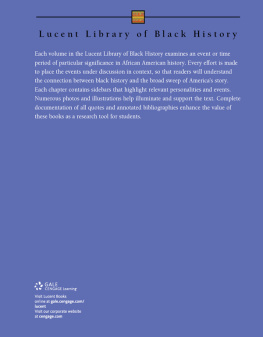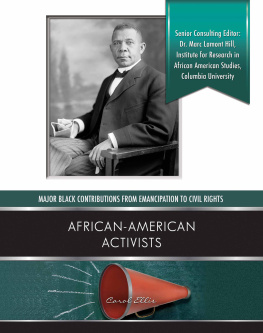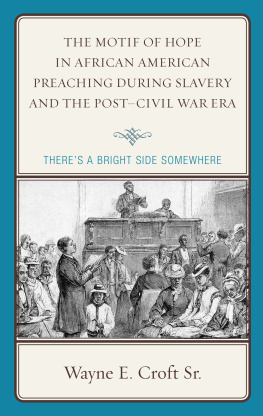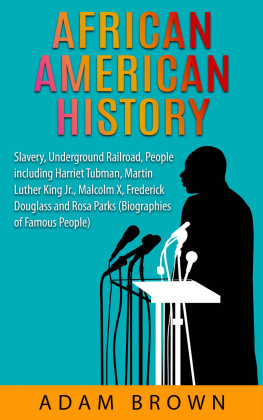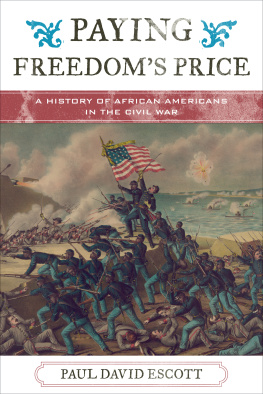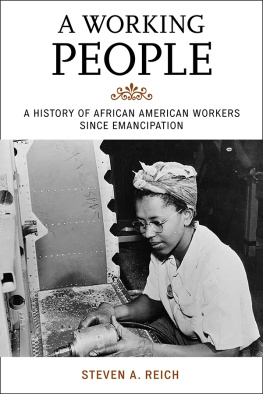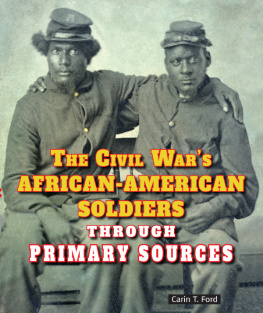

2013 Gale, Cengage Learning
ALL RIGHTS RESERVED. No part of this work covered by the copyright herein may be reproduced, transmitted, stored, or used in any form or by any means graphic, electronic, or mechanical, including but not limited to photocopying, recording, scanning, digitizing, taping, Web distribution, information networks, or information storage and retrieval systems, except as permitted under Section 107 or 108 of the 1976 United States Copyright Act, without the prior written permission of the publisher.
Every effort has been made to trace the owners of copyrighted material.
LIBRARY OF CONGRESS CATALOGING-IN-PUBLICATION DATA
Uschan, Michael V., 1948
Landmarks in African American history / by Michael V. Uschan.
p. cm. -- (Lucent library of Black history)
Includes bibliographical references and index.
ISBN 978-1-4205-0921-2 (hardcover)
1. African Americans--History--Sources. 2. African Americans--Historiography. 3. African Americans--Monuments. 4. Historic sites--United States. 5. Historic buildings--United States. 6. Monuments--United States. 7. United States-- History--Civil War, 1861-1865--Battlefields. I. Title.
E185.U77 2012
973'.0496073--dc23
2012028722
Lucent Books
27500 Drake Rd.
Farmington Hills, MI 48331
ISBN-13: 978-1-4205-0921-2
ISBN-10: 1-4205-0921-7
Printed in the United States of America
1 2 3 4 5 6 7 16 15 14 13 12

Contents
I t has been more than 500 years since Africans were first brought to the New World in shackles, and over 140 years since slavery was formally abolished in the United States. Over 50 years have passed since the fallacy of separate but equal was obliterated in the American courts, and some 40 years since the watershed Civil Rights Act of 1964 guaranteed the rights and liberties of all Americans, especially those of color. Over time, these changes have become celebrated landmarks in American history. In the twenty-first century, African American men and women are politicians, judges, diplomats, professors, deans, doctors, artists, athletes, business owners, and home owners. For many, the scars of the past have melted away in the opportunities that have been found in contemporary society. Observers such as Peter N. Kirsanow, who sits on the U.S. Commission of Civil Rights, point to these accomplishments and conclude, The growing black middle class may be viewed as proof that most of the civil rights battles have been won.
In spite of these legal victories, however, prejudice and inequality have persisted in American society. In 2003, African Americans comprised just 12 percent of the nations population, yet accounted for 44 percent of its prison inmates and 24 percent of its poor. Racially motivated hate crimes continue to appear on the pages of major newspapers in many American cities. Furthermore, many African Americans still experience either overt or muted racism in their daily lives. A 1996 study undertaken by Professor Nancy Krieger of the Harvard School of Public Health, for example, found that 80 percent of the African American participants reported having experienced racial discrimination in one or more settings, including at work or school, applying for housing and medical care, from the police or in the courts, and on the street or in a public setting.
It is for these reasons that many believe the struggle for racial equality and justice is far from over. These episodes of discrimination threaten to shatter the illusion that America has completely overcome its racist past, causing many black Americans to become increasingly frustrated and confused. Scholar and writer Ellis Cose has described this splintered state in the following way: I have done everything I was supposed to do. I have stayed out of trouble with the law, gone to the right schools, and worked myself nearly to death. What more do they want? Why in Gods name wont they accept me as a full human being? For Cose and others, the struggle for equality and justice has yet to be fully achieved.
In many subtle yet important ways the traumatic experiences of slavery and segregation continue to inform the way race is discussed and experienced in the twenty-first century. Indeed, it is possible that America will always grapple with the fallout from its distressing past. Ulric Haynes, dean of the Hofstra University School of Business, has said, Perhaps race will always matter, given the historical circumstances under which we came to this country. But studying this past and understanding how it contributes to present-day dialogues about race and history in America is a critical component of contemporary education. To this end, the Lucent Library of Black History offers a thorough look at the experiences that have shaped the black community and the American people as a whole. Annotated bibliographies provide readers with ideas for further research, while fully documented primary and secondary source quotations enhance the text. Each book in the series explores a different episode of black history; together they provide students with a wealth of information as well as launching points for further study and discussion.

The Importance of Landmarks
O n February 22, 2012, President Barack Obama participated in the ground-breaking ceremony for the National Museum of African American History and Culture in Washington, D.C. The museum documents the long, troubled, yet triumphant history of African Americans since the first of them arrived as slaves in 1619 in the English colony of Virginia. Displays in the museum range from slave shackles small enough for a child to the trumpet musician Louis Armstrong blew so gloriously to entertain millions of people. Even the museums location is symbolic of black history. Although its site on the National Mall is close to where a slave market once existed, it is just 1 mile (1.6km) from where Martin Luther King Jr. spoke to an estimated quarter of a million people on August 28, 1963, in a historic civil rights rally. The museum is also just a few miles distant from the White House occupied by Obama, the first African American president.
Obama and First Lady Michelle Obama were living symbols at the ground breaking of the upward path African Americans have traveled in U.S. historyfrom slavery to holding and wielding the power of the nations highest office. Obama called the ceremony a celebration of life and said the museum was important because it would keep alive the history of African Americans: It is on this spotalongside the monuments to those who gave birth to this nation, and those who worked so
Historic landmarks clustered near the museum include monuments honoring King, presidents George Washington and Thomas Jefferson, and the soldiers who fought in World War II and the Vietnam War. Because of its importance in telling the fourcentury-long story of African Americans, the museum instantly became one of the nations most important African American landmarks. However, it is only one of hundreds of landmarks spread across the length and breadth of the nation that detail the history of African Americans since before the United States even came into existence.
Next page
